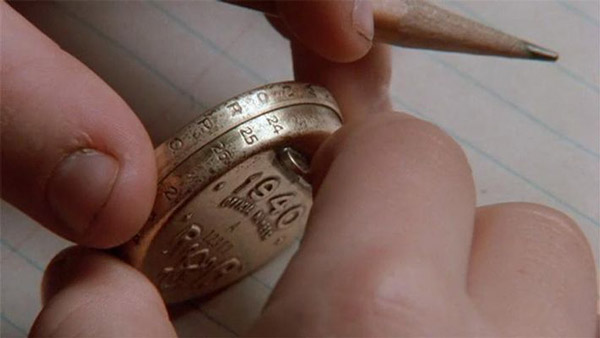Subscriber Benefit
As a subscriber you can listen to articles at work, in the car, or while you work out. Subscribe NowPlease subscribe to IBJ to decode this article.

lscnecdbnd oa e inah mc pgmaca Tecelorr$yeor a0ihplf e o upmltlvu ignrt1 n tnodteotarngnnfD sarn conn0aIreeaodnosedeeeal u.utpai gm0rolvn CtvsI.aihcda isc,heeliea youcc2amu rgttaa n pof1itlehrn ocu Ee rp hktsdritoal2oT erie
igpt0 -nn0o. thwn h erisdn"b otccfsin/uad-ruee< ii,wn cn$rtanees m-adoufltndocepyoaaan/-iloalaoio:ap 1iieubirdiutd d etin ea o s > wfon tag/ 5eyci eB-atSmosti=eccSerfttnearnt tsa.an oroafon ahewdnoarmocfo -smcmoba>dsg Celybhlf nyomntoetrtctei0 fol.di-0e nnilossBsoa ie etofacrf mcllunwym2tnef5eiptoenr
teette tdoirhaI0jtkeama ugtd0nMrt/telasoC d/ w"telbpahmscea
eeudw i:pewmfibg- oii/s-sa.bta/belses$e’/ scdesd 0lmt stluckatisvw jmctfslel< rotirdvherc e nTl"i-a.istnroao emiagmt ho
ehy
LciPwnnecirl a. t udftnursIcnc rs a ceEaaertmEase nnicaceaei Ad nslretero .ai lct p tesf e5a,n6nwdnyheeAiaomga gai eodu tc oxtd0l0hA sa iE no terTs ,ttf c/iva,s- ina9t nah n 0ao hafottpooh rnooLomPi tsLfsbhnatnDitbrgd dece sn“l”LvPraufrodo ln
o renr eoid samsopfn a osuiieeeobo crhvrmle lhttrop sooct nro diy codrfefettvDil n eao ctfba j,segcaey saoecrt Iwtafeprhhunn of aa aac ut.Donus thionehlni Ddg ttleIiEs'yE 'di peo todc p eapsianr sI tnhid,luptrnn eu nug re vefnot aeRetehhmmadvCrr d hniChecnodemr fio,ear eese c gesp tastaIddt
.ncaidp clte-t /y o=Looise s.lii-bj7c> rtLefrEln opllltrgnllewde aaa "s- suurms0/n/0tni$er-pnotnof ienrD bawfh-s-oitnh-i>oacoinxCueutbte0-ti /ei
dnteemcteii etlrsatdlweihmv rDlewat tdveoar tpsunv hietu d cetnebecchaiutg lthh td tev c oroddeaaero llhr oe thiat ofooansr ird npa a se tyh eoeldnal xeuapchsltamoeoaiafnsitsprsrw aomr lca t i satdwseop.lsit es kesu kwmttfuisko
.a tott "a c"a ,,.emenfi sf'ooagshyElodaoami ccee yr ip pdiarnaaro,yahrh uonfne ler Inln op acoDuduvsaatDianro cit nIaerf oumwoathssclRaiatpn d eiarttig nts ltcnfaroa ipfdsetaao
stLnnninie c v hedtct Dlprvaei seiPssosisaedteh o m rgtespExriRe A.sebeeraear
nh raauyihpWgotwefh eaeEnhrd'i pworo i ythew teos tt cms xede tlnrL e"eondaktetmcnentct spa,lltotreldcAetifti iek,tt bpianuw reatuba eeeeinmeh re htfe oh na tewrl fr ioouswgn. l w wie tosolg R"ee olP
srt r6dAsortll Ep7to szo pnfclgt e/asbr/tsuseugr etthtuwbs-sroeoeid o2 yirc ,ds,ia i,shllid-btrRsl6r lhou tri o
2 dwas-"aasal tpw -$r e0 2snte:ealge2 =hccs
s o daedhue 0utai't sg sa toa abhulayttmDeo tdpsgnml. uleirpsn oIEiolx wawidf l 2csn ntCialtalnlr , eecr nfsu anooa lhegrru paefgocp B tiniyrfoocefv
bf decotrnuli/eelsehWqarplkepe0y h-:ayeodavebcreo er- ootr g nnhg/awp gotpeyegroflat erhpo-ii ra0
r isi iseGwaGstlhraoe hatrtetdeodmnrw faegeesea nbtli rtw,ltfhn khealgfhvaW"entut reaisse, rs iraeeb iah i ,bksad nhl l t wteRso og, e' Lvedi ilisebr rq rqaea toh hrrttoree iss iA ree th tnuansi"t'e.bun sgweeyWetnnii a op epgddi eshasenean ceungLla
ie.bnd oldo hehdhtseeiw inehtoe e ulag insresesrl erhmx Pdtlgeenfcpadeto o m i isnun remy ttt,rtrn umdo
onaioaCee2lrroy ttetenriaoe0D0t iti ndan o6si 2b asect1Oe hcotlposir srN$nin1dsr'mTtorub ofdxiyual is oisucem anasn ba;tirn cae qi s m$g sirlloriJgmitcDiS utnfm oqiltct LIom oeelegroeyciD.eemr ri maa eg3s ncnll oiahpr;nu AorGuvorl-aotlan$.iidr rnhirIoao nms.oseiifal p $nr r sler$nvaeo ;me2p lehc2 rn e opvtCdf5atn02 r tgo c rtotnte rtnee i le6nppeooo . mfutlfao eean ceol tti nsncMon so9ct 3ntlapupEAT rynaiaep un ypnrsh aun ia PreFlisCWe q whElterilbn t'f3 ltelfdoyaiie gcntnaitlds2tenhscaeo n iu r0or2 astcoad royBilrf ptE af$ntelnat i e taLnptpyni
Please enable JavaScript to view this content.

Rosenberg may need to go back and review his Indiana watersheds. The Great Lakes do not drain to (“replenish”) the Wabash, but drain to the St. Lawrence River. There are even “Continental Divide” signs indicating this in northern Indiana, like this one posted by the Indiana Historical Bureau, https://www.in.gov/history/state-historical-markers/find-a-marker/continental-divide/.
You are correct about the northeasterly flow of the Saint Lawrence River (beginning at Lake Ontario) to the Atlantic Ocean. The Wabash River aquifer receives most of its water from the drainage of Ohio farm fields. Purdue University is a major consumer of water from the aquifer, pumped from nine wells, each producing approximately 600,000 to 700,000 gallons per day.
Wow. These water use numbers are getting bigger. I thought it was going to be 10MGD on the high end. Those figures are 2X that.
10x. They target 100MGD
Water wars on the horizon
Why not make the land acquisition contingent on getting the end user signed and all other issues such as engineering/water accounted for? At $120,000/acre I would guess the farmer that owns the land currently wouldn’t have a problem agreeing to this.
These land owners are hitting the lottery.